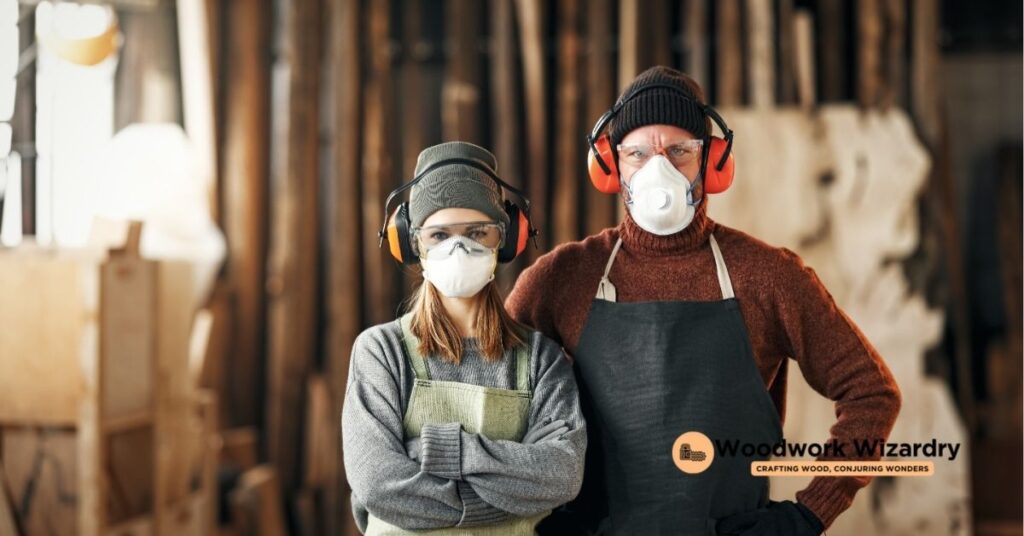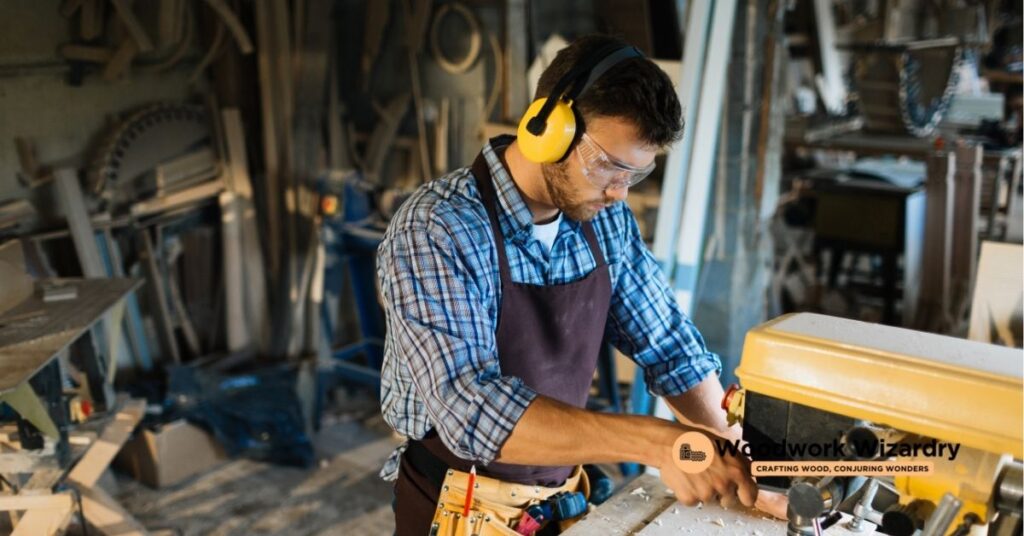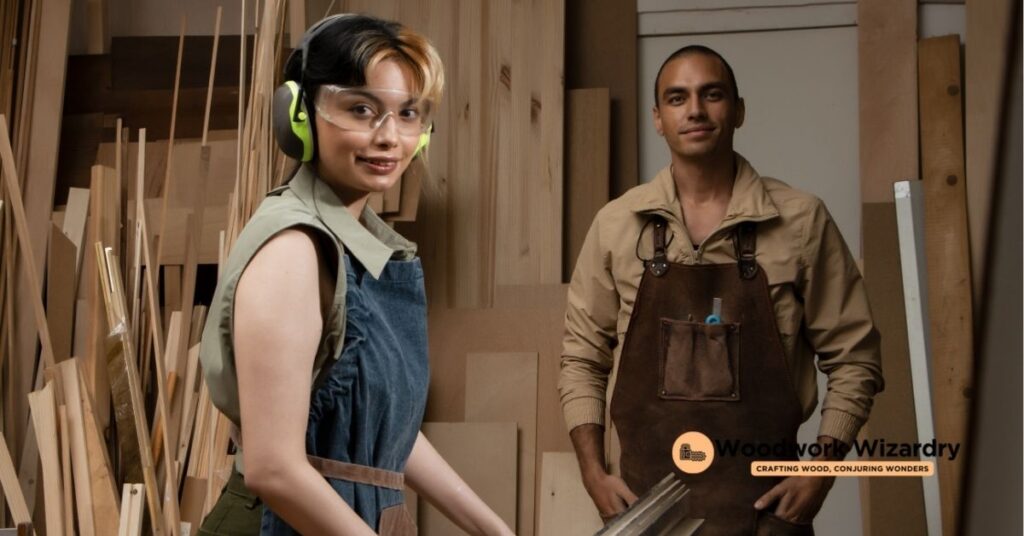Woodworking is an art that demands focus, precision, and the right tools. But amidst the hum of saws and the roar of sanders, your hearing is constantly at risk. Prolonged exposure to loud noise can lead to irreversible hearing damage, and that’s the last thing you want when pursuing your passion. Protecting your ears isn’t just a precaution—it’s a necessity.
Imagine working in your shop with headphones that not only shield your ears but also let you enjoy your favorite music or stay connected to calls. Hearing protection headphones designed for woodworking do exactly that. They’re the perfect blend of safety and convenience, allowing you to work smarter and safer. Why compromise your hearing when you can have comfort, functionality, and protection all in one?
Importance Of Hearing Protection In Woodworking

Operating woodworking tools like saws and sanders generates noise levels that can exceed 85 decibels. Prolonged exposure to these sounds contributes to permanent hearing loss. Without adequate protection, your ears face constant risk during each woodworking session.
Decibel levels from tools vary, with some reaching over 100 decibels, similar to a rock concert. Using hearing protection minimizes the impact of these harmful noises while allowing you to maintain focus on detailed tasks. Protecting your hearing ensures long-term auditory health, letting you continue woodworking without complications.
Hearing loss develops slowly, making it difficult to notice until important damage is done. Integrating protective gear, like hearing protection headphones, reduces these risks. These headphones not only block noise but also offer additional features like Bluetooth connectivity, increasing their functionality in woodworking spaces.
Features To Look For In Hearing Protection Headphones

Hearing protection headphones for woodworking need to balance safety and functionality. When selecting a pair, certain features can enhance their effectiveness and usability.
Noise Reduction Rating (NRR)
The Noise Reduction Rating indicates how well headphones protect against harmful sound levels. Choose models with an NRR of at least 25 decibels for adequate protection against woodworking tools that often exceed 85 decibels. Higher NRR values offer better noise isolation in environments with tools like sanders and table saws.
Comfort And Fit
Comfort is essential for wearing headphones during extended woodworking sessions. Look for adjustable headbands, cushioned ear cups, and lightweight designs. Ensure the fit is snug to block external noise effectively without causing discomfort. Poorly fitting headphones can reduce their protective capability and lead to premature fatigue.
Durability And Build Quality
Solid construction helps headphones withstand the dust, vibrations, and occasional impacts common in woodworking shops. Materials like reinforced plastics or metal components are preferable for their robustness. Seek headphones with IP-rated dust resistance to ensure longevity in demanding environments.
Connectivity Options
Integrated Bluetooth connectivity allows you to stream music or take calls without compromising hearing protection. Some models include built-in microphones for hands-free communication. Prioritize headphones with a stable wireless range and long battery life to stay connected during lengthy projects.
Top Hearing Protection Headphones For Woodworking
Choosing effective hearing protection headphones customized for woodworking enhances safety and comfort. Many options exist, offering varying features to suit your needs.
Over Ear Models
Over ear models provide exceptional noise isolation by completely covering your ears. These headphones often feature a Noise Reduction Rating (NRR) of 25 decibels or higher, ensuring protection against loud tools reaching up to 100 decibels. Soft, cushioned ear cups and adjustable headbands make them comfortable for long usage. Brands like 3M WorkTunes offer durable designs and additional features like audio compatibility for simultaneous entertainment.
In Ear Models
In ear models are compact and lightweight, fitting inside your ears to block harmful noise. They work well in environments where bulky equipment isn’t ideal. Silicone or foam tips improve the seal and reduce sound, often achieving an NRR of 25 decibels or more. Options such as ISOtunes PRO 2.0 deliver advanced ear protection while incorporating features like sweat resistance, beneficial in active workspace situations.
Bluetooth Enabled Options
Bluetooth enabled headphones combine noise protection with wireless connectivity. These models let you stream music or handle calls hands-free, ensuring productivity without compromising safety. High-performance designs like the 3M WorkTunes Wireless feature built-in Bluetooth and durable materials suited for woodworking shops. Noise isolation with NRR ratings of 25 decibels or more ensures these headphones prioritize hearing safety while improving your work environment.
How To Properly Use Hearing Protection Headphones

Hearing protection headphones are essential for woodworking safety. Their effectiveness depends on correct usage and care.
Ensuring A Proper Seal
A proper seal prevents harmful noise from entering. Position the ear cups over your ears to cover them entirely. Adjustable headbands are helpful for achieving a snug, secure fit. Check that there are no gaps between the ear cups and your head. Long hair or accessories, like eyeglasses with thick frames, can interfere with the seal and reduce effectiveness. Test the noise reduction by turning on woodworking tools and confirming that external sounds are significantly muffled.
Maintaining And Cleaning Your Headphones
Regular cleaning extends the headphones’ lifespan. Use a soft, damp cloth to gently wipe the ear cups after each use to remove sweat and dust. Avoid using abrasive cleaners to prevent material damage. Inspect your headphones periodically for wear, paying close attention to cushions and seals, as damaged parts compromise performance. Replace worn-out components with manufacturer-recommended parts when necessary to maintain optimal noise reduction. Store your headphones in a protective case or a dust-free environment to keep them in good condition.
Pros And Cons Of Hearing Protection Headphones In Woodworking

Hearing protection headphones provide important advantages for woodworking. They minimize exposure to harmful noise levels by reducing sounds from tools like saws and sanders, often exceeding 100 decibels. Many models combine advanced noise reduction with Bluetooth connectivity, enabling you to listen to music or handle calls while maintaining safety. Comfort features, such as cushioned ear cups and adjustable headbands, make these headphones suitable for long woodworking sessions. Their rugged construction ensures durability in demanding workshop environments.
Even though these benefits, potential drawbacks exist. Wearing headphones with Bluetooth functions might lead to distractions in environments where concentration is critical. Prolonged use without breaks can cause discomfort or sweat build-up, especially in warmer spaces. Over time, lower-quality models may wear out, reducing their effectiveness against harmful noise. Cost can also be a factor, as high-performance headphones with advanced features often require a larger investment. Understanding these trade-offs helps you make informed decisions customized to your woodworking needs.
Conclusion
Protecting your hearing while woodworking is a step you can’t afford to overlook. Investing in high-quality hearing protection headphones not only safeguards your ears but also enhances your overall experience with features like Bluetooth connectivity and durable designs. By choosing the right pair that fits comfortably, offers a reliable Noise Reduction Rating, and suits your exact needs, you’re setting yourself up for safer and more enjoyable woodworking sessions. Take the time to care for your headphones properly, and they’ll continue to provide effective protection for years to come. Your hearing is priceless—prioritize it.







